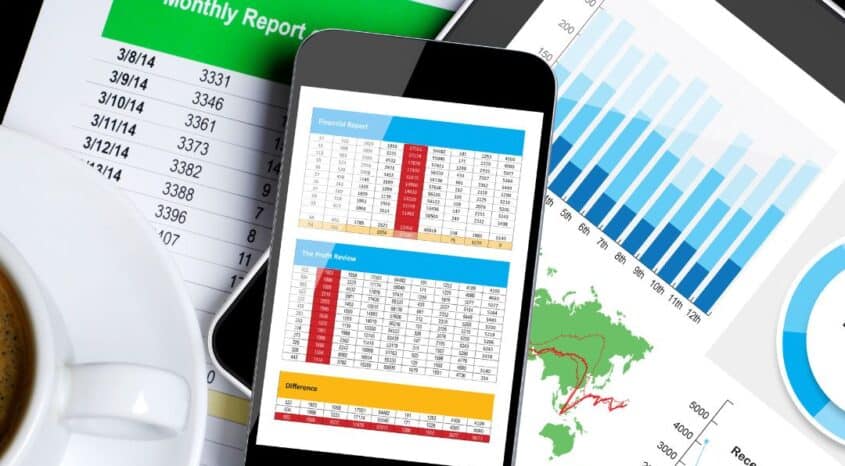Running a business in the modern marketplace means making high-pressure, make-or-break decisions, including about which products to stock in order to maximize profit.
Demand planning – a type of predictive analysis that forecasts the demands of a customer base, often months ahead of time – can be challenging at the best of times. However, recent supply chain issues mean half of all retailers have experienced stockout situations in the last year and ever-evolving consumer trends means accurately forecasting demand is trickier than ever.
If you get demand planning right, it will underpin your purchasing of goods, marketing and pricing strategies, staffing levels and ultimately support your business growth. If you get it wrong, it can result in stockouts, unhappy customers and major cash flow issues.
Fortunately, forecasting demand doesn’t have to be a guessing game. Here are 10 demand planning tricks that will help you save time, reduce errors and boost growth…
- Adjust for seasonality, weather and promotions
Whether it’s during the festive season, when the weather turns or when there’s an offer running, every retail business will experience spikes in demand at various points throughout the year. It’s essential that these upticks are factored in when forecasting demand for your products.
Trying to make this calculation manually can be a huge drain on your time and easy to get wrong, but the best demand planning software can do it quickly, easily and accurately. With advanced algorithms, it can reflect past and future peaks to accurately predict exactly how much inventory you will need to meet your goals.
2. Shift slow-moving products
Demand planning software is for more than just working out how much stock to order. It should also provide you with easy-to-understand reports that make it easy to identify your best and worst performing products.
This information is invaluable for helping you reflect on your pricing (are your items too cheap, too expensive or just right?). It also means you can free up cash that’s tied up in inventory by discounting slow-moving (or overstocked) products, and then reinvest in the more popular products to boost your profit.
3. Get your timing right
When there are peak periods or promotions on the horizon, it can be tempting to stockpile the items you think will sell best. However, storage can be expensive – and it doesn’t make good business sense to have piles of stock sitting around months ahead of schedule.
You’ll need to strike the balance right of ordering the optimum quantity at the optimum time. If all you have is a spreadsheet and a pen and paper at your disposal, this can feel like an impossible task.
However, the best demand planning software will allow you to add the lead times for your complete inventory, and then provide you with replenishment recommendations with timings factored in. You can even get alerted in advance when it’s time to reorder a low-running product – the new stock will arrive in time and you won’t lose any revenue in the interim.
4. Expect the unexpected
It’s a particularly challenging and uncertain time in retail right now. According to a Brightpearl study, 80% of US retailers have been impacted in the last 12 months (or are currently impacted) by supply chain issues – and for some, it’s having a devastating impact. A quarter (26%) of UK brands claim to be just four weeks away from supply chain issues causing ‘crisis point’ issues with cash flow.
Being able to accurately and reliably forecast demand is a game-changer, helping brands predict even unexpected turns of events (like product shortages or rising prices for raw materials, which impacted 67% and 47% of retailers in the US respectively in the last year.
- Be one step ahead of trends
Shopping trends are one of the big drivers of product demand – but they can come and go in the blink of an eye. Your demand forecasting data, combined with support from retail experts, can help you spot shopping patterns and emerging trends before your competitors, so you can stock up and create bundles to maximize sales opportunities.
- Think long term
It can be easy to get caught up in worrying whether you have enough of the right items to meet your targets for next week, or next month. But, for your business to grow, you often need to think 18 or even 24 months ahead. After all, consumers are fickle – Brightpearl’s recent study showed that a third (32%) of US consumers chose to ditch their usual brand and shop with a new online store in the last year simply because they had an item in stock.
By analyzing your demand planning data, you can confidently make longer term decisions about which products to focus on, which marketing campaigns to repeat and and which areas to invest in.
- Carefully consider metrics
Whether it’s sales data, inventory turnover, out-of-stock frequency or production lead times, your demand forecast should be based on the metrics you choose to focus on. With an extensive list of available KPIs, you can report on the ones that matter most to your business and make data-driven decisions.
It can be worth experimenting on the combination of metrics which produce the best results for your unique needs. Get the key members of your team from all departments together to decide on the data that’s most valuable for you.
- Appreciate your uniqueness
Every brand is different – so are their forecasting needs. Your approach to demand planning will vary depending on your goals, size, sector, location and business model, so don’t expect what works for other businesses to work for you.
Instead, focus on achieving a 360-degree view of your business performance, with detailed reports by product, brand, supplier and warehouse, so you can nail your growth strategy and boost your growth.
- Track results
It’s vital to monitor the reports produced by your demand planning software. These will help you spot where you can streamline your inventory processes and highlight any adjustments needed to your forecasting approach.
If you have items that are out of stock, your demand planning software should highlight the potential revenue loss for each out of stock product. This can be a powerful way to measure the potential financial impact of stockouts.
It’s also a good idea to periodically compare your business performance to any other time period to identify red flags or opportunities for improvement.
10. Get expert help
Forecasting demand for your products is essential, but it should be part of a wider effort to streamline, simplify and automate operations. Brands that choose a flexible Retail Operating System can enjoy demand planning functionality alongside features including powerful automation, order management and CRM – backed up by unlimited support from a dedicated team of retail experts.
Ready to start forecasting demand in your business? Find out more about Brightpearl’s Demand Planner and book a free demo here.




